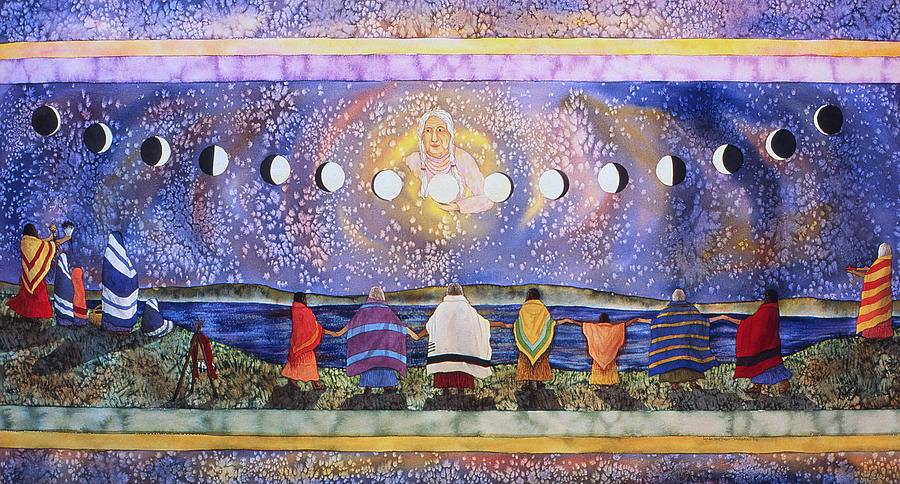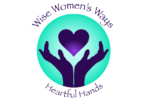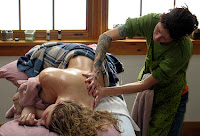Mother Roasting
The Chinese call it zuo yuezi. The Vietnamese, nam lua in. Mother Roasting. The term itself will either conjure up strange mental images of a woman in a stove, or will bring a smile to your face and comfort to your bones.
In the event you, like most women in our Western culture, don’t know what Mother Roasting is, it is simply the practice of keeping a woman warm immediately after birth and in the first few weeks following birth. Cross-culturally, it is believed to seal up emotional, physical, and spiritual gateways that have been opened by birth. It is a way of protecting a woman’s body, her newborn, and, as a result, nourish her back into being.
Cultural Perspectives
“Many anthropologists interpret the postpartum practices of traditional cultures as ritualistic methods of purifying unclean women after birth. Sometimes this may have been the case, but, in fact, most often these practices were likely done to support the mother in her transition and give her time To rest and bond with her baby (Lang 1987).
When looking at birth from anthropological perspective, it seems that women in traditional societies commonly not only had relatively easy births, but also enjoyed rapid and complete recoveries with minimal complications, especially in regard to postpartum blood loss. Also, rarely were there problems with breast-milk production (Lang 1987).” – Natural Health after Birth: Complete Guide to Postpartum Wellnessby Aviva Jill Romm
Worldwide, women in all cultures are encouraged to lie-in during the weeks following birth, allowing other women in their community to take care of them, nourishing, massaging, binding, bathing, and loving on them. They treat the mother with reverence and respect, giving her a safe space to focus solely on her own bodies needs and her babies needs.
This alone, without any pomp and ritual, will help a woman to ‘come back to’ society quicker, by giving her grace and understanding to take a moment to claim and process the recent events and new life she is entrusted with.
In addition to the simplicity of nourishing a woman during her postpartum period, many cultures have specific practices, and sometimes even rituals, to honor this time.
Women of Western culture, on the other hand, rarely find themselves given postpartum massage, rarely find their rooms warmed nicely, rarely practice binding, and, more often than not, are offered a cup of ice water and a cold pack for their bottom and are expected to get back to caring for their homes and guests within 3 days.
Practices Worth Considering
MASSAGE
FEEDING
HEAT
Heat has long been used as a way of strengthening the tissues, nerves, and blood vessels that may have been weakened and be in danger of further, or long-term, stress after birth.
“According to traditional Chinese medicine, heat is highly significant for lie woman who has recently given birth. One of the three major factors considered important for the health of postpartum women is “sparing the exterior”. According to traditional Chinese herbalist Andy Ellis, this means protecting against wind and avoiding cold drafts. Childbirth is thought to deplete what in Chinese is called wei chi. The Wei Chi is the body’s protective immune capacity, found specifically on the surface of the body and in the lungs. Special herbs protect the woman and nourish the wei chi, the woman is expected to remain indoors for 1 month after birth.” – Natural Health after Birth: Complete Guide to Postpartum Wellness by Aviva Jill Romm
Native Alaskan women were traditionally expected to stay indoors, away from wind and cold, for either one month, if she had a boy, and two months, if she had a girl, so as not to become chilled.
Modern medicine can see that a woman ‘cools’ after birth due to the loss of heat through baby’s body, amniotic fluid and blood loss, and general exhaustion and fatigue from labor. Moxa sticks, incense sticks, hot water bottles, sauna treatments, perineal steaming, warmed rooms, hot oils, or hot hands packets are all acceptable forms of mother heating.
In Laos and Thailand, women are treated to steam sauna-like treatments – using specific herbs.
“Many of these terpenes have documented antimicrobial and analgesic properties, and some have also synergistic interactions with other terpenes. The mode of application in hotbed and mother roasting differs from the documented mechanisms of action of these terpenes. Plants in these two practices are likely to serve mainly hygienic purposes, by segregating the mother from infection sources such as beds, mats, stools, cloth and towels. Steam sauna medicinal plant use through inhalation of essential oils vapors can possibly have medicinal efficacy, but is unlikely to alleviate the ailments commonly encountered during postpartum convalescence. Steam sauna medicinal plant use through dermal condensation of essential oils, and steam bath cleansing of the perineal area is possibly a pragmatic use of the reported medicinal plants, as terpene constituents have documented antimicrobial, analgesic and anti-inflammatory properties.” – Steam Sauna and Mother Roasting in Lao
In Malaysia, women are given hot stone treatments; rocks are warmed and placed on her abdomen. In other cultures, a hot water bottle or heating pad is applied to the abdomen to help the uterus shrink and become less swollen.
In other Asiatic and Indigenous Native American cultures, the new father is given the honor and duty to make and keep a fire to be burned for weeks near or under the mother’s bed. In Mexico and South Western United States, many Mexican women dress their babies and themselves in layers of blankets, sweaters, hats and scarves whenever they leave their homes. Some will even stuff their ears with cotton to avoid wind.
BINDING
Belly binding helps to reduce swelling and fluid retention by bringing in the abdominal walls, disallowing the abdomen to distend and thus, fill, with fluid and air. It also works to compress loose skin, draw the abdominal muscles together, encourage proper posture, and keep loose organs in place – facilitating a more comfortable and quicker recovery with less risk of diastasis recti occurring.
In Conclusion
Mother Roasting is a time-honored tradition that seeks to give women the safe space to rest, recuperate, allow their body to come back into balance, and allow their minds, hearts, and selves to focus solely on their new role as mother and the new life of their baby. Mother Roasting encourages and promotes lactation, healthy bodies, and healthy minds.





